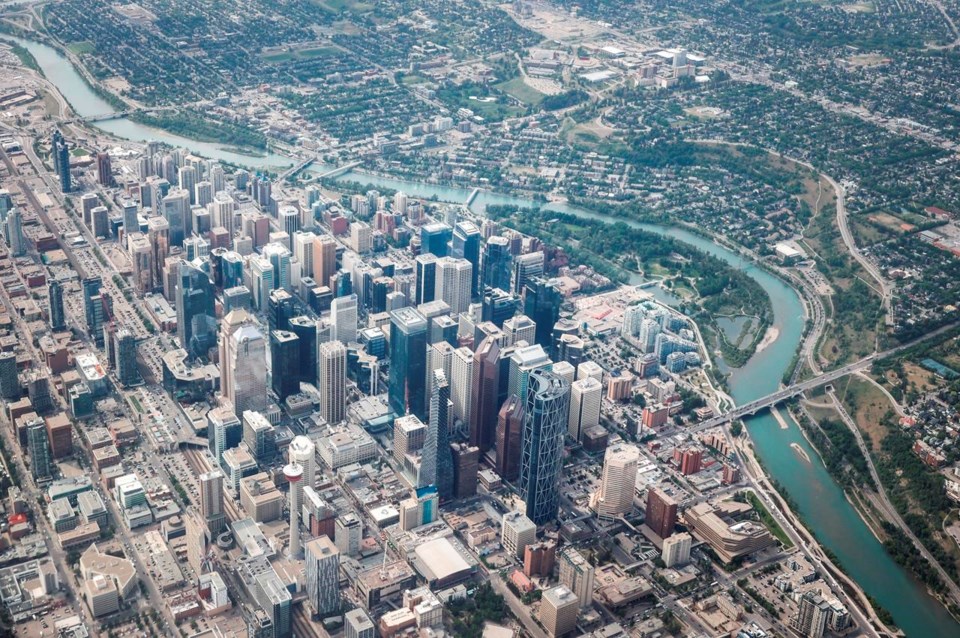CALGARY — Alberta's largest city has brought in some outdoor water restrictions due to record low flows in the Bow and Elbow rivers that supply it and other downstream communities across the Prairies.
Under Calgary's Water Utility Bylaw, restrictions can be put in place to conserve water in times of shortage.
"Because we continue to see dry conditions and record-level low flows in the Bow and Elbow rivers, we are now moving the drought dial to very low and declaring outdoor watering restrictions at Stage 1," Nicole Newton, the city's manager of natural environment and adaptation, told reporters in Calgary on Tuesday.
"This issue is not related to water quality, but rather an issue of water quantity."
The Bow and Elbow rivers, which both start in the Rockies, merge in Calgary and provide the city's drinking water. The Bow then joins the Oldman River in southern Alberta to become the South Saskatchewan River that flows into Saskatchewan and eventually empties into Hudson Bay.
Chris Huston, manager of drinking water distribution, said Calgarians use about 650 million litres of water each day.
"We're trying to get that down, so that's why these restrictions are important," he said.
Newton said the restrictions could save up to 40 Olympic-size swimming pools — 100 million litres — of water each day. That, she said, could help to irrigate up to 5,000 hectares of crops downstream.
"With the forecasted warm and dry water conditions on the horizon, this will greatly help sustain the city of Calgary's water supply as well as supporting our neighbours downstream and the biodiversity that relies upon this precious resource," she said.
The restrictions in Calgary limit any customer who uses municipal water, including residences, businesses and city operations.
Residents, for example, are limited to watering lawns, gardens, trees and shrubs to one day a week and are prohibited from washing outdoor surfaces or vehicles on their driveways.
"There are exceptions to the bylaw, particularly for health and safety concerns and core business needs," she said.
Newton noted that the city will take an education-first approach when it comes to enforcement.
"Our bylaw officers will be out on patrol supporting Calgarians in understanding what those restrictions entail," she said, noting those who don't comply could face a $400 fine.
Newton said the city has brought in water restrictions during past floods, but "this is the first time that the city of Calgary has enacted outdoor water restrictions as a result of drought."
The flow on the Elbow, said Newton, is the lowest it's been since around 2000 and the Bow River is the lowest it's been since 1911.
"We did experience a low snowpack this year as well as an earlier-than-normal snowmelt," she said. "It is not normal for this time of year."
John Pomeroy, a professor at the University of Saskatchewan who's the Canada Research Chair in Water Resources and Climate Change, said the low snowpack was followed by a worst-case scenario of record heat.
"It was the hottest May on record in Banff, in the mountains, and that's where this water is coming from," he said. "And then very low precipitation, well below normal through the summer with more hot weather."
Pomeroy said any rain that fell hasn't covered large areas and the groundwater has been depleting all summer, leading to river flows that would be expected in September or October.
"This is global warming. This is not El Nino or La Nina," he said. "This is a practice run for us as to what to expect."
The low river flows, added Pomeroy, are connected to a drought that extends from Vancouver Island across the Prairies. In the boreal forest, he said it extends north up to the Northwest Territories and then across to Eastern Canada.
"It's the same weather that gave us the wildfires," he said.
Canada has had an unusually severe wildfire season, breaking historical records on the amount of land burned and affecting communities that aren't used to dealing with the flames and smoke.
This report by The Canadian Press was first published Aug. 15, 2023.
Colette Derworiz, The Canadian Press



